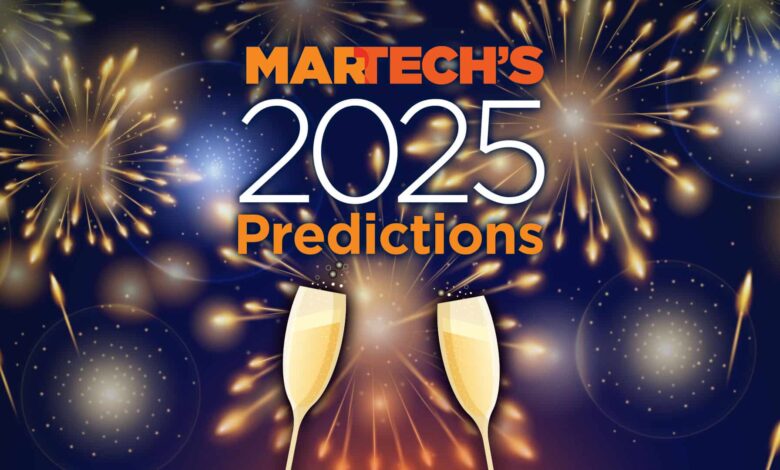Customer Experience Tools and Strategies: Forecast 2025

Customer experience has faced serious challenges during the pandemic. Now there is no looking back. Customers want it all, and there’s really no excuse not to get it. Digital, in-store, mixed “phygital” journeys, they are all on the table in 2025. The key to customer success will be to maintain a strategy covering all the bases.
Many of this year’s predictions include specific areas where customer experience will get a boost. The main message for marketers is to bring it all together. This way, customers can choose how they want to learn more and purchase.
More flexibility and no clear winner
Customer experiences will continue to evolve according to the same principles established in recent years, aiming for fluidity and flexibility. Don’t expect a radical change in customer expectations. Instead, marketers should continue to diversify across multiple digital and physical touchpoints and support a range of delivery methods. These experiences must be connected by data, providing a layer of personalization that recognizes the preferred channels and interests of individual customers or segments.
“There will be no clear ‘winner’ when it comes to where and how people shop: sales will be spread across physical retail, online stores, marketplaces and social media platforms,” predicts Katie Moro, global director of managed services at Commerce. Productsup experience platform. “This will be reflected in the variety of delivery options, including home delivery, curbside pickup and even in-store collection. The traditional concept of the ‘Christmas shopping rush’ will continue to evolve, with consumers taking a more flexible and expansive approach to their shopping, using a combination of online and offline touchpoints.
“Expect more sophisticated in-store media networks that enable multi-channel campaigns, with personalized offers appearing on digital screens as a customer walks through a store,” said Megan Harbold, vice president of strategy and of the growth of the Skai omnichannel marketing platform. “This will redefine and continue to amplify the complexity of omnichannel media strategies and measurement.”
Accessibility to meet increasingly strict standards
Web and mobile app accessibility will gain popularity through specific rules for government agencies and broader business standards. This will drive increased demand for all digital experiences to be accessible in 2025.
In 2024, the Ministry of Justice Title II updated of the Americans with Disabilities Act (ADA) to require state and local governments to ensure the accessibility of government websites and digital services. The Department of Health and Human Services (HHS) also released updated guidelines for hospitals and health care providers aligned with Title II. Compliance deadlines for these two updated accessibility guidelines begin as early as April 2026.
“While these specific updates target government entities and healthcare providers, they set a precedent that other industries should take seriously,” said Chad Sollis, chief marketing officer of web accessibility platform AudioEye . “For marketers in the healthcare and government sectors, this is a serious wake-up call that increases the urgency to integrate accessibility into all aspects of their digital strategies, not just for meet legal requirements, but also to ensure that they serve a broad and diverse audience. who rely on their services.
Sollis added: “As accessibility standards tighten in 2025, marketers will need to demonstrate not only intent but action, integrating accessibility into every campaign, channel and touchpoint.
Dig Deeper: How to Integrate Web Accessibility into Digital Marketing Efforts
Live experiences enhanced with AI
Live events like sports and the Oscars are becoming more and more personalized. For example, this March, the 2025 Oscars will be broadcast live on Hulu for the first time ever. Many of these experiences will offer a new level of personalization for viewers. These experiences will be powered by AI.
“In live event production, AI will automate captioning, analyze video in real time and engage viewers,” said Sujatha Gopal, chief technology officer of the Communications, Media and Services business unit information at TCS. “Real-time translation will help reach a global audience. AI will also drive engagement and sales through gamification and predictive analytics, helping with the creation and moderation of dynamic content.
Gopal added: “Real-time personalization will tailor experiences based on user behavior and preferences, making interactions more relevant. AI-powered virtual assistants will provide real-time assistance during live events, answering queries and offering recommendations. For sentiment analysis and social listening, AI will analyze audience reactions in real time, tailoring content based on interests.
Image recognition will power interactive experiences
Customers will depend on image recognition to learn more about the products and advertisements they encounter. When they see something in the world, including advertisements on outdoor screens or a TV, they take a photo of it and expect more information to appear on their phone screen via search or mobile app.
“2025 will be the year that brands fully harness the true potential of image recognition technology, fundamentally changing the way brands connect with their audiences, transforming everyday visuals into actionable touchpoints,” he said. said Matty Beckerman, CEO of interactive experience company IRCODE. “This change will make the connection between brands and consumers more seamless and intuitive, setting a new standard for engagement, personalization and streamlining experiences and commerce across all platforms. »
Dig Deeper: QR Code Alternative Introduces Shoppable Video Advertising Tool
Diversify channels to reduce brand safety risks
Marketers are understandably concerned about brand safety across digital channels. Brand safety tools are doing more than ever to evaluate and score content to avoid placing ads in the wrong context. However, entire platforms have become suspect in the eyes of some audiences. The government’s attempt to shut down TikTok hasn’t helped the venue. That could change depending on the company’s appeal to the Supreme Court to be heard in January. However, X/Twitter’s lax approach to content management has scared away advertisers and users. It will be interesting to see if Elon Musk’s role in the new administration will make a difference.
Dig Deeper: TikTok files appeal to the Supreme Court
“In 2025, the advertising industry’s reliance on social media will continue to raise concerns about brand safety and channel concentration,” said Jonathan Neddenriep, CTO and co-founder of Postie. “Even though social media platforms perform strongly, the risk of ads appearing alongside inappropriate content will drive brands to explore more diverse advertising channels. »
Postie is a platform for data-driven direct mail. Don’t be surprised if some brands look to bypass the online noise and invest more in offline channels like direct mail.
“Despite the rise of digital, direct mail will remain an essential marketing tool in 2025,” said Neddenriep. “Its tangible nature and measurable return on investment will be particularly attractive in a climate where efficiency is paramount. While physical catalogs will retain their appeal for some brands, the focus will be on exploring diverse and more cost-effective direct mail formats, such as postcards.
Personalize experiences through loyalty
Brands will be looking for new ways to gain an edge over the competition in the new year. This will cause many people to re-evaluate and strengthen their loyalty programs. Efforts to improve the overall customer experience will also apply to loyalty experiences. And marketers will leverage loyalty programs to do more than just entice current customers to buy more for additional benefits.
“In hypercompetitive markets, brands will increasingly use loyalty programs not only to retain customers, but also to acquire new ones and gain market share,” said Tara DeZao, director of adtech and martech product marketing. at Pega.
Marketers will seek partnerships to expand the dimensions of loyalty programs and improve the experience.
“Companies are building partnership networks within their loyalty programs, offering exclusive deals and perks to attract customers from their competitors,” DeZao said. “This is especially true when competitors sell similar offerings with little differentiation. An example of this would be telecommunications companies where offers and prices are similar across brands, and where consumers can easily switch products and are often [incentivized] to do it. »
DeZao added: “This will be particularly valuable for brands that have a lack of first-party data. By leveraging this data, businesses can further personalize customer experiences, driving long-term engagement and loyalty.



